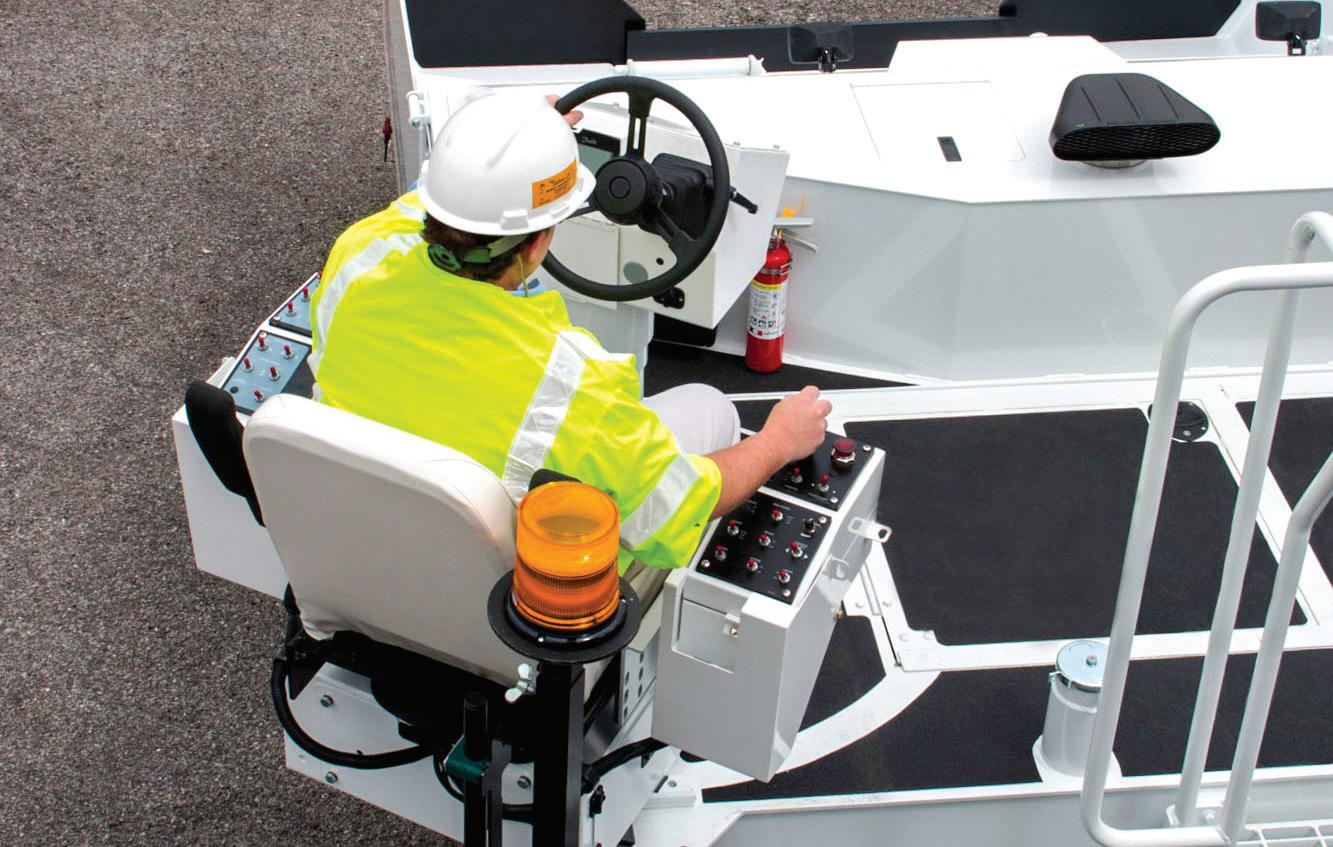
10 minute read
Operators Move to the Forefront in Paver Designs



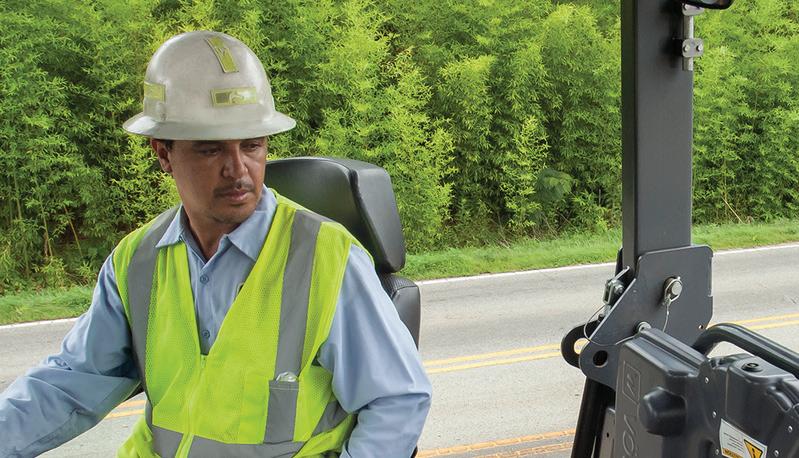
BECKY SHULTZ, CONTRIBUTING EDITOR & JESSICA LOMBARDO, EDITOR-IN-CHIEF

OPERATORS
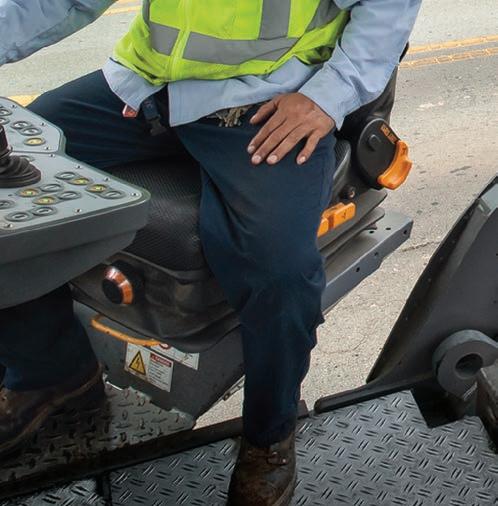
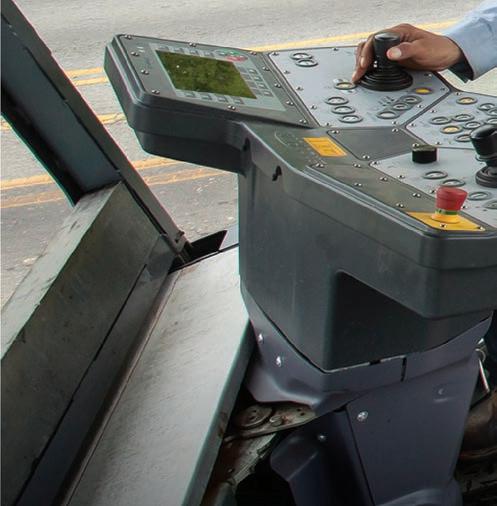
Move to the Forefront in Paver Designs

The goal of paver manufacturers is to use technology to enhance the performance of the equipment, make operators more productive and make the equipment operate more efficiently.
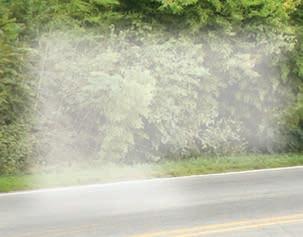
Wirtgen Group / Vogele
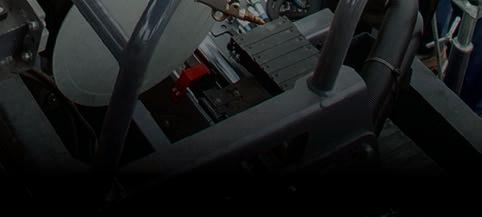
OPERATORS
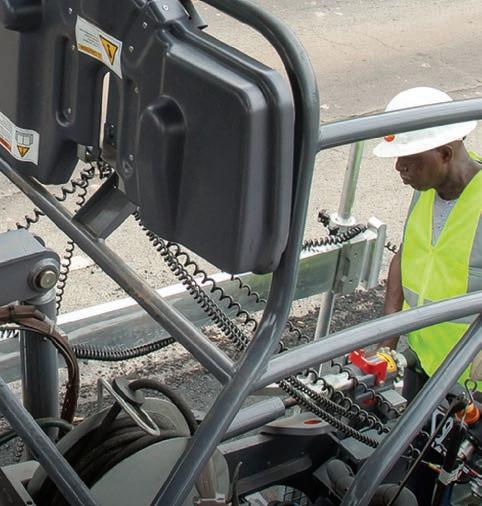
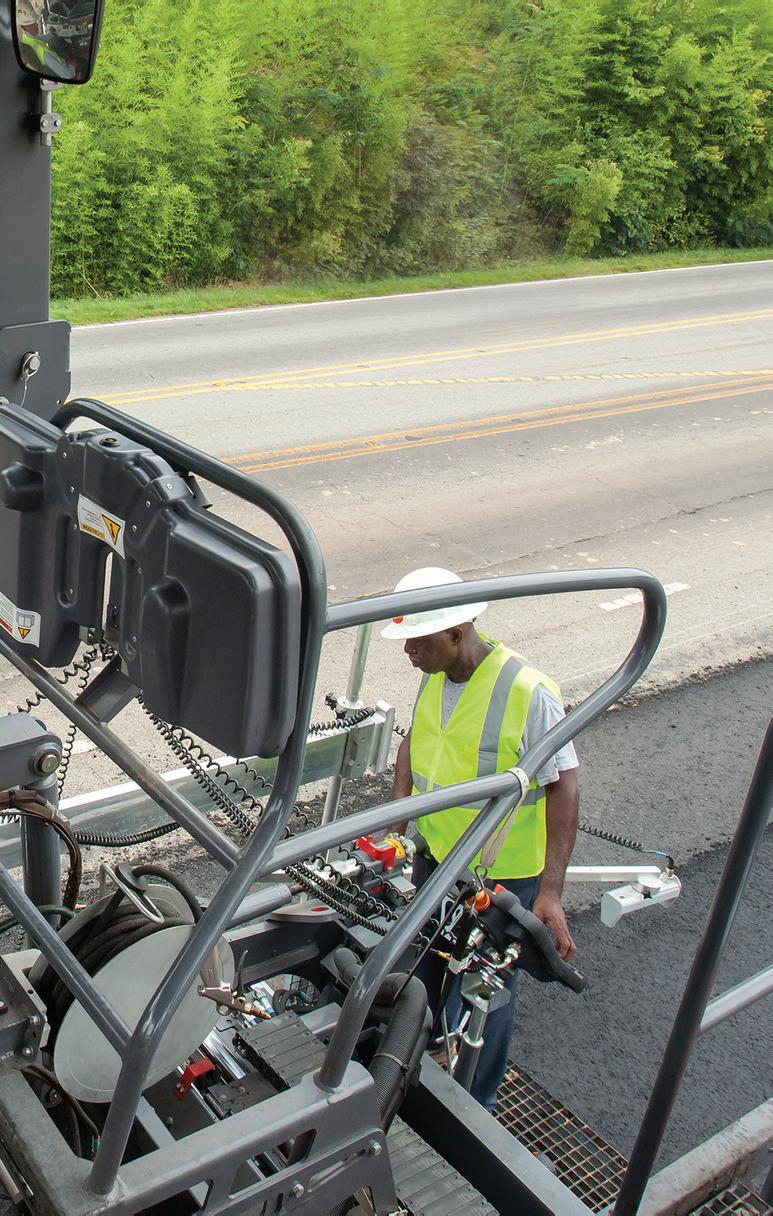
Asphalt pavers have evolved to provide greater controllability and operator comfort
Paving equipment has come a long way in the past decade as manufacturers continue to improve their products’ features and capabilities in order to ensure optimal production speed and pavement quality. But changes have also targeted the paver operator and improved operations.
“Operator control systems on highway class pavers have been evolving very rapidly in the past decade and the primary reason behind this is adaptation of advanced technology by the paving crews," Vijay Palanisamy, director of product marketing & communications, Dynapac North America LLC says. "They are looking for ways to improve efficiency and also working conditions. Technology advancement in this area not only helps tremendously on operators’ efficiency, it also helps getting real time feedback about the paving process."
These advancements are also being developed to help a struggling industry attract new workers. "Operator stations need to appeal to younger workforce. Most of the people getting hired are new to the industry and younger," Kyle Neisen, product director, Construction Machinery Solutions at Astec Industries, Inc. says. “We recognize there is constantly a new generation joining the industry, and we need to make sure as an industry that we are making equipment that will appeal to the younger people who will run it.”
crews," Vijay Palanisamy, director of product marketing & communications, Dynapac North America LLC says. efficiency and also working conditions. Technology advancement in this area not only helps tremendously on operators’ efficiency, it also helps getting real time feedback about the paving
COOL OPERATOR
As with other equipment, operator comfort goes a long way in keeping paver operators content. Vögele asphalt pavers from the Wirtgen Group include ergonomically efficient operator stations.
“This keeps the operator in a comfortable position so they are more alert and productive,” says Jim Holland, vice president of sales, Vögele. “It was important for us, as well, to prevent the paver operator from sitting over the tunnel where the heat of the asphalt can cause more fatigue. In addition, our swingout dual operator seat has glass shields protecting the operator from elements of wind, heat and noise, providing the most comfortable workspace in the industry.”
“Comfort and simplification have been big drivers in the highway-class paver development,” adds Jon Anderson, asphalt paver sales support consultant at Caterpillar. “Long days and high employee turnover have led to the development of cooler operating environments, fumes ventilation systems and enhanced visibility. Also, automated machine functions and interactive operating displays have evolved to help limit operator fatigue and enhance efficiency.”
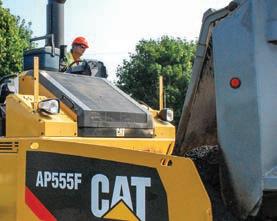
Caterpillar’s top deck, frontmounted cooling system helps keep the operating environment cooler by redirecting exhaust air away from the operator and crew.
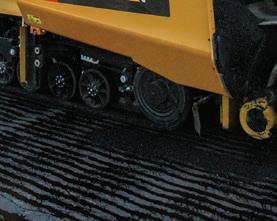


Consider features such as Caterpillar’s top deck, front-mounted cooling system, which can help keep the operating environment cooler by redirecting exhaust air away from the operator and crew. “Cooler operating stations and fumes mitigation help operators stay more attentive,” says Anderson. “Cat highway-class pavers are equipped with a ventilation system that collects fumes from the auger chamber and redirects them with the engine and cooling system exhaust out over the hopper, away from the crew for a more user-friendly operating environment.”
Cooling isn’t the only benefit of such design enhancements. “The top deck cooling system combined with the integrated generator have dramatically reduced the sound levels around the [Cat asphalt] paver, helping to improve crew communication and efficiency,” says Anderson.
SIMPLIFICATION AIDS CONTROLLABILITY
The ability to easily perform and monitor paver operations, along with simplified use, has been another key focus.
“Consistent controls and user friendly interface result in a better user experience," Neisen says. "The development team continually works to review controls and implement improvements. We look at what people like and don’t like in heavy equipment, automotive, etc. and apply those principles where they make sense."
Controllability is critical given the broad range of skill levels among today’s workforce. “The operator stations have become more intuitive to control and monitor the functions of a paver,” says Holland. “The Vögele paver can be placed into Pave Mode with the press of a single button. All settings for that job, including auger speed, conveyor speed, grade settings and paving speed, automatically resume to the previous settings. This allows for the operator to be more productive and maintain positive control of the performance of the paver. With the simplified controls, it allows the operators to be more conscious of safe practices and productivity.”
“The goal of equipment manufacturers is to use technology to enhance the performance of the equipment, make the operators more productive and make the equipment operate more efficiently,” he adds, noting that Vögele’s operations concept is centered around ease of use. “This provides the best platform for a new operator to learn from and the experienced operator to better their productivity.”
Operator stations now include carefully positioned switches/buttons based on frequency of use, says Palanisamy, making them easy to remember with minimal training. “Also, most manufacturers are going with symbols so that regardless of the operator region/language preferences, the operator can easily understand the functions,” he points out.
“By consolidating these functions, it is easier on the operator to locate and monitor the performance of the asphalt paver,” Holland comments. “In addition, this enhances the ability to train new operators since it takes fewer steps to put the machine into the paving mode.
“Control of the paver is much more accurate with the use of sensors, which give feedback to the operator, as well. This will enhance our ability to allow the use of 3D control systems, as the use of these in paving applications is expanding,” he adds.
Switches/buttons with lights for activated function on the control panel make it even easier to monitor paver operation at a glance.
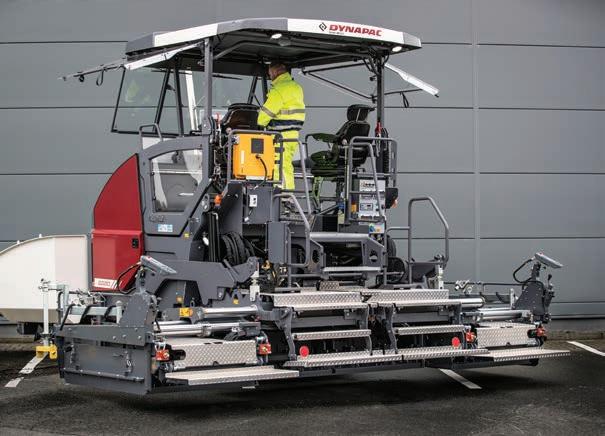
Operators are benefiting from increased automation, which enables them to get the job done accurately with repeatable results.
Dynapac
“Simplified controls with interactive operating displays help operators visualize machine conditions and simplify setup for more efficient performance,” says Anderson. “Being able to optimize machine functions not only helps reduce fatigue, it also helps crews produce better asphalt mats.”


ADVANCES IN AUTOMATION
A number of manufacturers have invested in “smart” control systems designed to enhance and/or automate key functions.
“Easy and reliable operation is one of the main focuses of control system advancements. Another area is capturing and showing in real time the key paving parameters so the paving crew consistently knows the mat they are putting down is within specification,” says Palanisamy.
Such capabilities are referred to as operator assist functions on Dynapac Highway Class SD asphalt pavers. One example is Set Assist, which enables the paver to “memorize” the paving parameters of different layers of the job — paving width, thickness, head of material, etc. — and replicate those parameters consistently across different areas and days during a paving project. Another is Paving Manager, which controls all functions and displays real-time paving parameters, such as paving width and thickness and material throughput, so the jobsite foreman can monitor production in real time. Other assist functions include Truck Assist, Mat Tracker and more.
“These advancements help the paver operators quickly set the paver for the particular job and start paving rather than waiting for time-consuming setups and trials before full production can begin,” says Palanisamy. “Another area where the operator is benefiting is the level of automation, which makes their life very easy and gets the job done accurately [with] repeatability of results.”
Automated functions simplify and speed operation from setup to cleanup. “Cat F-Series [asphalt] pavers

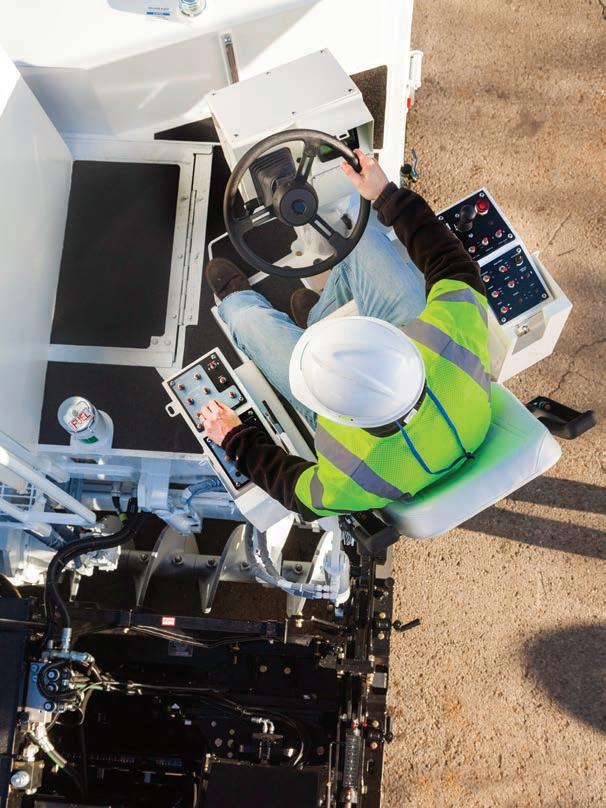
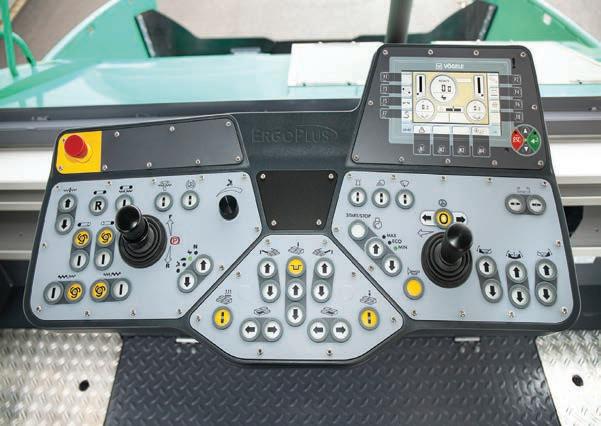
By consolidating functions, it is easier for an operator to locate, control and monitor paver performance. Shown is the current generation operating concept on a Vogele asphalt paver.
Roadtec operator stations appeal to the younger workforce. This means they designed a user-friendly interface with consistent controls for a better user experience.

are equipped with auto-fill that helps simplify paving starts by filling the auger chamber until the mix reaches the material feed sensor set point,” says Anderson. “A single-touch material delivery function automatically activates the augers and conveyors with the touch of a button. One-touch hopper control allows the hopper wings and the optional front hydraulic apron to be folded with a single touch and release.
“Cleanout/warmup mode activates the augers, conveyors and tamper bars (if equipped) in slow speed, allowing for the application of release agents to prevent material buildup,” he continues. “Machine-integrated grade controls help provide paving accuracy and ensure that the system always stays with the machine.” These features enable the operator to focus on other critical tasks, such as haul truck management and crew safety.
IMPACT ON PAVEMENT QUALITY
While designed to aid the operator, these and other advancements ultimately improve overall paving operations.
"The machines need to be intuitive," Niesen says. "If a control is not working or is too confusing, it could result in laying a poor quality mat. That’s where that intuitive feature set comes into play."
Anderson agrees, noting, “Ease of use, comfort and machine automation all play an important role in producing quality pavements. Simplified machine functions that operators easily understand can help operators monitor other jobsite functions. Comfort features help alleviate operator fatigue and can lead to a continuation of proper paving techniques. Machine automation can help ensure consistent asphalt placement, leading to better quality surfaces and longer lasting roads.”
Such end results make not just paver operators but all parties, particularly project owners, much happier at the end of the day and at the end of a project.
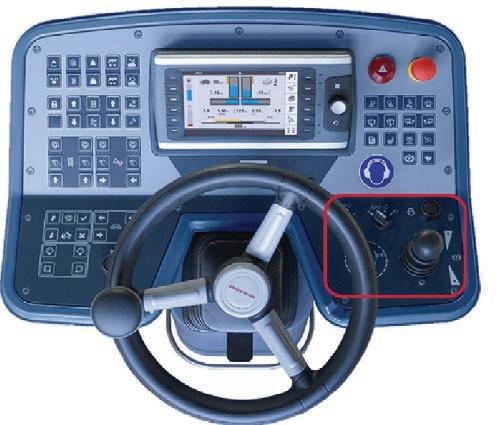
For more information on asphalt pavers, visit
ForConstructionPros. com/21026879


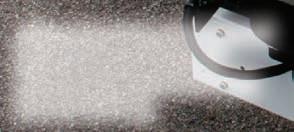
The seats and controls mounted to the seat station slide out past the side of the machine for increased visibilty. Most manufacturers are beginning to use symbols so that regardless of the operator region/ language preferences, the operator can easily understand the functions

